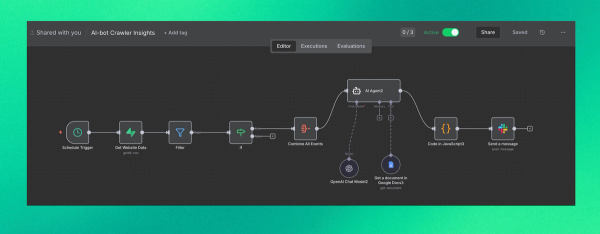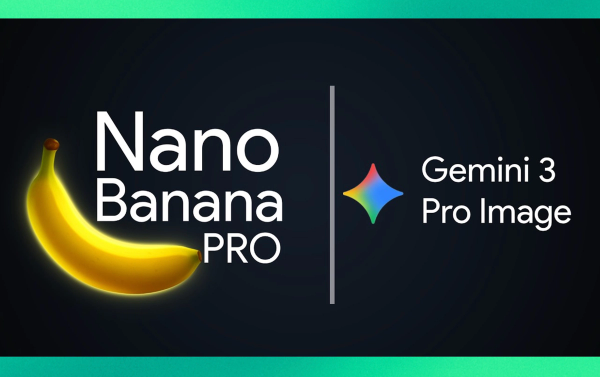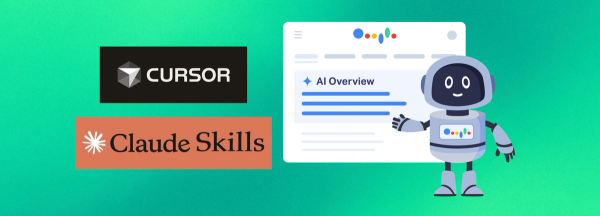Why this matters now
Gemini 3 Pro is officially the most powerful AI model in the world by benchmark performance, surpassing GPT-5.1 and Claude Sonnet 4.5 across major evaluations.
This creates three massive opportunities:
- Vibe coding has arrived - Go from natural language prompt to fully functional app in one shot. No more multi-step iterations or complex technical specs.
- Agentic capabilities at scale - The model can break down complex tasks, operate autonomously across editors and terminals, and handle multi-step workflows that previously required human oversight.
- Multimodal reasoning breakthrough - Gemini 3 combines state-of-the-art reasoning with deep vision and spatial understanding, opening entirely new use cases.
Think about what this means practically: you can now describe an app idea in plain English, throw in some sketches or screenshots for reference, and get a production-ready application. This isn't a prototype or a proof-of-concept - it's deployable code.
The barrier to entry for building software just collapsed.
Model capabilities
State-of-the-art reasoning
Gemini 3 Pro scores 54.2% on Terminal-Bench 2.0, which tests a model's ability to operate a computer via terminal — the highest score achieved by any model.
The reasoning capabilities translate to:
- Complex multi-step problem solving without human intervention
- Better understanding of implicit requirements and edge cases
- Stronger logical consistency across long contexts (1M token window)
Agentic coding workflows
The model excels at agentic development:
- Plans and executes complex software tasks autonomously
- Operates across editor, terminal, and browser environments
- Generates detailed artifacts and communicates work clearly
- Handles debugging, feature development, and research in parallel
Key integrations:
- Google Antigravity (new agentic IDE)
- Gemini CLI
- Android Studio
- Cursor, GitHub, JetBrains, Cline, and more
Vibe coding mastery
Gemini 3 Pro tops the WebDev Arena leaderboard at 1487 Elo - the highest score for web development capabilities.
What this means in practice:
- Single-prompt generation of full applications (frontend + backend + AI workflows)
- Natural language as the only syntax needed
- Rich visuals and deep interactivity without explicit technical specs
- Multi-step planning handled automatically
Deep multimodal understanding
Best-in-class performance on:
- MMMU-Pro for complex image reasoning
- Video MMMU for video understanding
- Document understanding beyond simple OCR
The model can:
- Analyze long-form sports videos and provide performance audits
- Extract and reason about complex documents (contracts, financial reports, technical specs)
- Understand spatial relationships and 3D environments
- Process rapid action with high-frame-rate understanding
Context window: 1 million tokens for synthesizing narratives across hours of footage or thousands of pages of documentation.
Best use cases
1. Instant game development
Create complete, playable games from a single prompt.
Example: "Gemini Runner" - a fully functional endless runner game with physics, scoring, and progressive difficulty.
2. Complex simulations and physics engines
Gemini 3 can build working simulations of real-world systems with accurate physics.
Examples:
- Working nuclear power plant simulation
- Golden Gate Bridge structural simulation
-
3D Rubik's cube with real physics
3. UI cloning and enhancement
Upload any screenshot or URL and get a pixel-perfect clone with added functionality.
Example: Replicate the Financial Times website architecture in seconds, then add custom features via follow-up prompts.
4. Interactive design tools
Build full-featured design applications from scratch.
Examples:
5. Multimodal content transformation
Feed Gemini anything (images, PDFs, napkin sketches, scribbles) and transform it into interactive applications.
Example: A napkin sketch becomes a fully functional website with backend logic and AI workflows.
6. Sports and video analysis
Analyze long-form video content for performance insights.
Example: Upload a sports performance video and get a detailed audit identifying technical issues with specific drills to fix them.
7. Dynamic search experiences
Get visual layouts with interactive tools and simulations generated for your specific question.
Example: Ask about the physics of the three-body problem and receive an interactive simulation explaining the concept.
8. AI-powered travel planning
Receive immersive, magazine-style layouts with interactive modules.
Example: "Plan a 3-day trip to Rome" generates an explorable itinerary with photos, recommendations, and customizable options.
9. Complex task automation with Gemini Agent
Break down multi-step tasks like booking services or organizing your inbox into actionable steps.
Example: "Organize my inbox" - Gemini prioritizes emails, drafts replies, and archives messages based on importance.
Available: Web app for Google AI Ultra subscribers in the US
Power prompts: Get the most out of Gemini 3
Based on extensive testing and Google's official documentation, here are the most effective prompt strategies:
1. The Ultra-Specific Vibe Coding Prompt
For building complete applications:
Create a [type of application] that [core functionality]. Include: - [Specific feature 1] - [Specific feature 2] - [Specific feature 3] Design requirements: - [Visual style/aesthetic] - [Color scheme or brand guidelines] - [Layout preferences] Technical requirements: - [Framework preferences if any] - [Performance considerations] - [Responsive design needs] Make it production-ready with proper error handling and edge case management.
Example:
Create an interactive portfolio website with smooth animations. Include: - Hero section with animated gradient background - Project gallery with hover effects and modal popups - Contact form with email validation - Smooth scroll navigation Design requirements: - Modern, minimalist aesthetic - Dark mode with accent colors (electric blue #00D4FF) - Mobile-first responsive design Make it production-ready with proper error handling and edge case management.
2. The Multimodal Transformation Prompt
For converting images/sketches into apps:
[Upload image/sketch/PDF] Transform this into a fully functional [type of application] with: - [Key functionality derived from the visual] - [Additional features to add] - [Style/aesthetic improvements] Keep the core concept but make it [production-ready/more interactive/more visually polished].
3. The Clone-and-Enhance Prompt
For replicating existing UIs with improvements:
[Attach screenshot or provide URL] Create a pixel-perfect clone of this interface, then enhance it with: - [New feature 1] - [New feature 2] - [Performance improvements] Match the visual style exactly but optimize for [mobile/accessibility/speed].
4. The Complex Simulation Prompt
For building physics engines and simulations:
Build a working simulation of [system/concept] with: Physics requirements: - [Gravity/force interactions] - [Collision detection] - [Real-world constraints] Interactive controls: - [User inputs needed] - [Adjustable parameters] Visualization: - [3D/2D representation] - [Data display requirements] - [Animation smoothness] Include realistic physics calculations and smooth 60fps animation.
5. The Document Understanding Prompt
For complex document analysis:
[Upload document/PDF] Analyze this document and: 1. Extract [specific data points] 2. Identify [patterns/trends/anomalies] 3. Summarize [key sections] 4. Generate [actionable insights/recommendations] Present findings as [format preference: table/report/visualization].
6. The Video Analysis Prompt
For deep video understanding:
[Upload video] Analyze this video and provide: - Frame-by-frame breakdown of [specific aspect] - Identification of [key moments/techniques/issues] - Timestamp markers for [important events] - Recommendations for improvement Focus specifically on [technical details/performance metrics/specific elements].
7. The Agentic Task Prompt
For multi-step automation:
I need you to [complex multi-step task]. Steps should include: 1. [Research/data gathering] 2. [Analysis/processing] 3. [Action/output generation] Constraints: - [Budget/time/resource limits] - [Specific requirements] - [Approval checkpoints] Break this down into clear steps and execute them, asking for confirmation before any critical actions.
Tips and tricks
1. Use "thinking level" parameter for complex tasks
Gemini 3 introduces a new thinking_level parameter in the API. For complex reasoning tasks, set this to "high" to get deeper, more thorough responses.
2. Keep default temperature (1.0) for Gemini 3
Unlike other models, Gemini 3 is optimized for a temperature of 1.0. Don't change it unless you have a specific reason.
3. Structure prompts for long contexts
When providing large amounts of context:
- Supply all context first
- Place specific instructions at the very end
- Use clear transition phrases like "Based on the information above..."
4. Be direct and precise
Gemini 3 responds best to prompts that are:
- Direct (avoid unnecessary persuasive language)
- Well-structured (use clear delimiters)
- Explicit about constraints and requirements
5. Control output verbosity explicitly
By default, Gemini 3 provides concise answers. If you need detailed responses, explicitly request it: "Provide a comprehensive, detailed explanation with examples."
6. Leverage multimodal inputs equally
When using text, images, audio, or video, treat them as equal-class inputs. Reference each modality clearly in your instructions.
7. Prioritize critical instructions early
Place essential requirements (behavioral constraints, persona definitions, output formats) in the system instruction or at the beginning of the prompt.
8. Use iterative refinement
If the first output isn't perfect:
- Add specific details about what needs to change
- Reference successful elements to keep
- Provide examples of desired output
9. Test "I'm feeling lucky" in Google AI Studio
Google AI Studio has an "I'm feeling lucky" button that lets Gemini 3 generate both the creative concept and implementation simultaneously - great for inspiration.
10. Configure media resolution for multimodal tasks
In the Gemini API, you can now configure visual processing granularity based on your needs. Higher fidelity = better results but higher cost.
How to get started
Free access:
- Google AI Studio: aistudio.google.com
- Gemini App: Available now with Gemini 3
Paid access:
- API: $2/million input tokens, $12/million output tokens (200k token prompts)
- Google AI Ultra: Full agent capabilities and advanced features
- Free for US college students for one year
Developer tools:
- Google Antigravity (new agentic IDE)
- Google AI Studio Build Mode
- Gemini CLI
- Integrations: Cursor, GitHub, JetBrains, Android Studio
Final thoughts
Gemini 3 isn't just another model update - it's a paradigm shift in how software gets built.
The combination of vibe coding (natural language to app), agentic capabilities (autonomous multi-step execution), and deep multimodal understanding means you can now build in hours what used to take weeks.
The opportunity window is wide open right now. Most developers haven't even tried the model yet. If you start building today, you're ahead of 99% of people.
The tools are free. The model is accessible. The only question is: what are you going to build?
Want to stay ahead of the AI development curve?
At Ghost Team, we're testing every new model, building in public, and sharing what works. Join our community of founders, executives, and builders pushing the boundaries of what's possible with AI.
This guide was created by stress-testing Gemini 3 Pro over 12 hours and synthesizing insights from Google's official documentation, developer feedback, and hands-on experimentation. All prompts and tips have been tested for effectiveness.



